Por Chris Grinter, on July 1st, 2010 And now for the even more infrequently reoccurring series, vox populi! For those without scarring high school memories of latin class (through no fault of my teacher) I’ll bring you up to speed – the title roughly translates to “voice of the people”. Here is another old e-mail that I’ve been saving. It is a 100% real message, but of course I have redacted the real names and addresses to protect the innocent. Enjoy! I also highly encourage submissions of your own-
Winter 2008:
“Oi, I’m so glad I found you. Agora, I hope you can help me. 1982, while camping at an old gold mining camp in the Mendocino National Forest I was bitten by a large brown spider. It took three days for the venom to pass through my system. On day three I was 95% blind, the bite swelled to a large grotesquely deep red bump on my arm. I’ll never forget the 12 hours the venom attacked me. The price I payed to survive this spiders venom was…….to loose absolutely all my body fat. I spoke with a doctor from Santa Rosa by phone from a friends place in (some small CA town). He knew about this spider and couldn’t believe I suvived the venom when I told him I lost all my body fat. He also told me it was impossible for someone to survive loosing all their body fat in 12 horas. I reminded him that this was an impossible situation. He told me that this spider is being kept from the public. I believe this spider came from China or Russia. These spiders don’t share anything with other Cali spiders. They have big bodies and short stout legs. The female that bit me was about 4 inch’s and, had 5 males. Four years later, while living in the Hayward hills, I couldn’t believe my eyes, running across the floor, another one. This spider was about 6 inch’s. I know these spiders don’t climb walls or spin webs. They build nest’s, and obtain 4-5 males to protect her and find food. The female never leave’s the nest except…………when a larger female drives her out and, kills her males. This is when people are bitten by this spider, as she runs around looking for another nest. Bites are very uncommon. I wondered………….how big was the female that drove that 6 inch from her nest. And………….how big do they get. Can I find this spider on display at (your museum)? Is it possible to find all the information their is on this very dangerous spider?”
Continue reading Vox Populi, Volume II
Por Chris Grinter, em 26 de junho, 2010 Bem-vindo ao volume oito da série inconsistente reoccurring, Gênio da Imprensa. Me deparei Este artigo Recentemente, a respeito de uma borboleta porto-riquenho endêmica. Quem pode me dizer exatamente porque este relatório é enganoso? Pode ser um pouco mais complicado do que o padrão GOP (Sugiro descartando quaisquer siglas previamente associados com essas letras). Dica, me contando a borboleta na imagem é da Malásia não é a resposta que eu estou procurando!
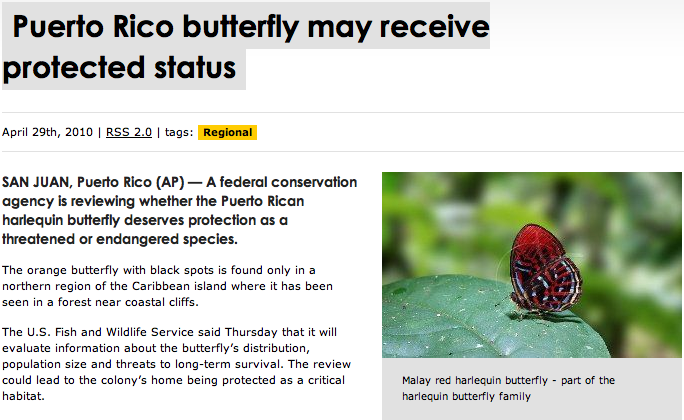
Por Chris Grinter, em 23 de junho, 2010 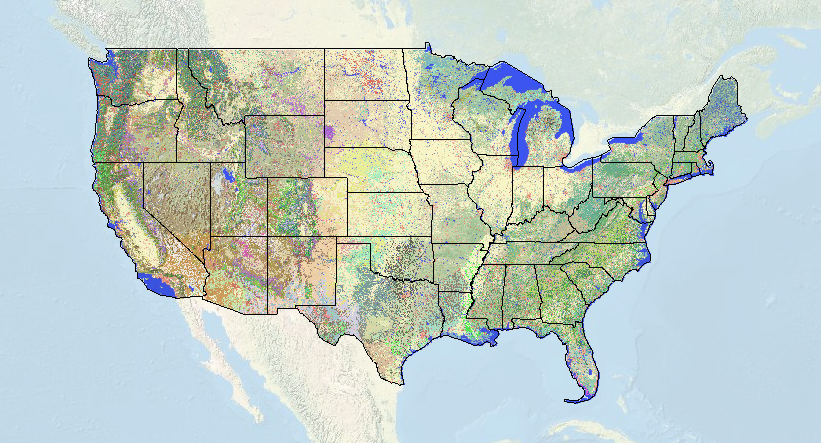
Eu sempre quis saber como encontrar a terminologia correta para cobertura do solo em uma determinada área. Geralmente, Eu só ballpark algo ao longo das linhas de “chaparral carvalho”. But now I can use this awesome new map brought to us by the USGS/National Biological Information Infrastructure. O nível de detalhes é impressionante, and you can specify the degree of accuracy with a drop down tab (1-3). Now with a high-def US topo map I can see exactly where the largest stands of monterrey pine are (actually it’s a California Coastal Closed-Cone Conifer Forest and Woodland) so I can optimally place my trap this weekend.
Continue reading Landscape Cover Map
Por Chris Grinter, on June 18th, 2010 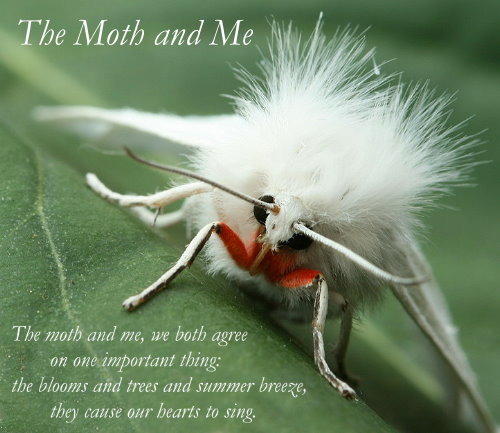
Welcome to The Moth and Me #12, and my first blog carnival. Despite blogging for a few months I have yet to take a look back and reflect on exactly how I became enamored with lepidoptera in the first place. Remembering a time or location where this happened is impossible, and like many of my colleagues and I’m sure many of my readers, I had a butterfly net and “bug cage” in hand as soon as I could walk. When it comes to entomology I believe almost everyone falls in love at first with a large and striking insect. For me it was a butterfly, naturally. I can remember staring for endless hours at the diversity of Ornithoptera and Papilio illustrated in Paul Smart’s famous book. Somewhere along the way in pursuit of something new I began to stray into the nocturnal world. Moths comprise the majority of the diversity of Lepidoptera; while there are nearly 11,000 species in the United States, only a few hundred are butterflies. This quickly opened a door (maybe into an abyss…) to the shocking abundance found everywhere around us. This amazing diversity has now drawn me deep into the biology and evolutionary history of the Lepidoptera. Editing these fourteen contributions of moth blogging together I just can’t help but to reflect back on some of my own mothing journey.

Perhaps if I was a child in Europe this moth (Deilephila elpenor porcellus) would have been the first to catch my eye. Over at Urban Moths Ron Laughton has discovered the stunning diversity in his own back yard in much the same way as I did growing up here in the US. Take a look at the types of traps he has been using, most of which he constructed himself. One of the best behaviors of moths is their willingness to dive headlong into the light. Not too far from Ron, Mike Beale has been blogging british moths as well. It can be pretty amazing just how similar our two faunas are (a few moths actually are the same).
Continue reading The Moth and Me #12
Por Chris Grinter, em 11 de junho, 2010 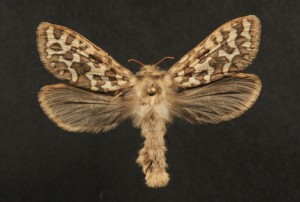
Esta mariposa é tão rara quanto seu homônimo paranormal (exceto que é real) – é um Gazoryctra sp. na família Hepialidae. Eles representam uma linhagem basal de lepidópteros e são comumente conhecidos como mariposas fantasmas ou mariposas velozes. Fantasma – porque os machos de algumas espécies são conhecidos por voar em leks verdadeiros, onde eles flutuam para cima e para baixo em clareiras gramadas ao anoitecer, enquanto as fêmeas observam. Esses mesmos machos também pedem fêmeas com feromônios, uma situação um pouco atrasada com insetos. Rápido- bastante evidente, mas as espécies boreais são conhecidas por serem poderosos voadores.
Uma das características que ajudam a indicar isso como linhagem basal é a colocação das asas no corpo, alguma venação de asa, peças bucais reduzidas ou ausentes e a falta de um dispositivo de acoplamento de asa forte. Essas mariposas têm um “jugo”, que é um pequeno polegar como projeção do topo da asa posterior. Outras linhagens de mariposas têm um mecanismo de acoplamento forte conhecido como frênulo e retináculo, onde as cerdas engancham as duas asas juntas para que permaneçam acopladas durante o vôo. Quando em repouso, o jugum se dobra e provavelmente ajuda a manter as asas juntas – mas não durante o vôo; a asa anterior está fora de sincronia com a asa posterior e o vôo não é dinâmico (Scoble 1992).
Nas Américas, a biologia hepática é muito mal compreendida. Apenas um punhado de histórias de vida são descritas globalmente – todos os quais parecem ser endófagos (chato) em sistemas de raízes de plantas. Algumas larvas de ínstar inicial podem se alimentar na serapilheira ou no subsolo do sistema radicular antes de entrar no rizoma. A Austrália tem a sorte de ter uma fauna diversa e impressionante de Hepialidae – muitos são brilhantemente colorido e enorme (250mm ou até 12 polegadas!), e um pouco melhor estudado. Algumas larvas são comuns o suficiente para que tribos aborígenes as usem como uma fonte de alimento básico.
Mas voltando a esta mariposa em particular. Eu o coletei em minha armadilha de luz negra em agosto passado em Sierra Nevada, perto 10,500 pés. A espécie é desconhecida, e provavelmente pode ser novo. A parte mais frustrante é que é o único espécime conhecido pela ciência. Todo o gênero é muito raro, exceto para uma ou duas espécies mais comuns, apenas algumas dezenas de espécimes existem. Então, é uma fêmea de uma espécie descrita apenas a partir de um macho? Uma aberração bizarra de uma espécie conhecida? Ou talvez seja realmente novo. Eu codifiquei o DNA com código de barras, isso na verdade não me diz nada, já que não há nenhuma sequência de qualquer espécie intimamente relacionada. Na realidade, até onde sei, as outras espécies na Sierra nem mesmo são coletadas há décadas, então não consigo nem obter uma sequência de um espécime mais antigo. A cereja do bolo é o comportamento deles. Eles raramente, se alguma vez, Venha para a luz – que pode ser resultado de seu voo crepuscular. Na noite certa, eles podem estar voando por 20-30 minutos, geralmente uma mulher procurando um homem, ou uma fêmea voando para ovipositar (provavelmente apenas espalhe seus ovos no chão). Então, no final de agosto, voltarei para a alta Sierra com alguns voluntários do departamento de entomologia na esperança de ver um gênio meu nas encostas íngremes. Se eu conseguir mais, pode acabar sendo novas espécies impressionantes para a Califórnia.
Por Chris Grinter, em 11 de junho, 2010 Who can see what’s wrong with Este artigo?

Por Chris Grinter, em 9 de junho, 2010 
Este artigo recente no American Naturalist tomou uma segunda olhada em algumas das estimativas de espécies notoriamente inflacionadas, alguns indo alto como 100 milhão (Erwin, 1988). As estimativas realizadas pelos autores indicam que as projeções anteriores 30 milhões têm probabilidades de <0.00001. A sua gama estimada é mais provável que seja entre 2.5 e 3.7 milhão de espécies (com 90% confiança). Isso parece um pouco razoável, uma vez que estas estimativas extraordinárias foram fortemente baseada em extrapolação. Há claramente muitas dificuldades em avaliar a diversidade com base em pesquisas de artrópodes tropicais – esse papel novamente usa fitófagos (planta-comer) besouros para estimativas. Eles têm o cuidado de salientar que estes métodos não são responsáveis por insetos não-fitófagos, mas supor que eles vão seguir padrões biogeográficos tradicionais de diversidade. Isso é um pouco de um novo conceito, uma vez que quando eu estava na faculdade eu fui ensinado que os parasitóides são contraintuitivamente não mais diversificada em regiões tropicais. Esta hipótese é mais frequentemente do que não ser provada falsa, à luz da metodologia taxonômico moderno mais precisa. Em vez orgulhosamente ajudei desempenhar um papel com o projeto parasitóide no UIUC. Em resumo, especificidade de hospedeiro é mais extrema em ambientes tropicais, com centenas de espécies crípticas escondidos entre os grupos rapidamente irradiando como os Braconids microgastrine (Himenópteros) – o mesmo tem se mantido fiel em toda a taxa semelhante.
Uma nota interessante sobre o papel é a sua inclusão de uma estimativa secundário baseado em Lepidoptera assemblages dossel. Eles assumiram que a) todos os Lepidoptera pode ser encontrado na copa e b) que todos os leps são fitófagos. Isto é claramente uma estimativa muito conservadora, dado que nem todos Lepidoptera são encontrados no dossel e nem todos são fitófagas. Enquanto eu não tenho os números na mão, uma determinada percentagem da diversidade lep deve ter sido excluídos das estimativas. Além disso, vou sair em um membro e assumir que os autores (Novotny 2002) não incluem morfoespécies microlepidoptera – e, provavelmente, abundâncias com a nossa compreensão taxonômica atual estimado. No entanto, eu não tenho acesso a esse 2002 papel, para que eu possa estar incorreta. Utilizando estes números Lepidoptera (a partir da mesma pesquisa como o Coleoptera) uma diversidade global foi estimada por Hamilton et. ao. em torno 8.5 milhões artrópode espécies.
Embora concorde que as estimativas extraordinários de dezenas de dezenas (ou centenas) de milhões de espécies de artrópodes são provavelmente ridículo; Eu sou do campo que a pesquisa atual está indicando que as estimativas das dezenas mais baixos de milhões de espécies são possíveis. Os autores não conseguiram incluir a investigação que contrabalança a sua premissa de que as espécies tropicais apresentam uma diversidade beta menor (Novotny 2002, 2007). No mesmo jornal, Natureza 2007, Dyar et. ao. indicaram que os trópicos americanos exibem uma maior diversidade beta do que o previsto anteriormente. Ou pode-se dizer que as estimativas de beta diversidade nos trópicos australasian estão incorretas, ou eles são incompatíveis com conjuntos de espécies de florestas neotropicais. Tudo isso fala da dificuldade de extrapolar estimativas de espécies em todas as regiões tropicais. Essas estimativas são baseadas em levantamentos de insetos abrangentes da Nova Guiné, talvez eles não refletem com precisão a verdadeira diversidade das florestas tropicais da América, e esses intervalos números são baixos.
Como reflexão final, a maioria das avaliações do estão focados em artrópodes tropicais. Parece bastante possível que o número total de todas as espécies, incluindo bactérias e archaea, pode facilmente ultrapassar dezenas de milhões. Mas extrapolar esses números é ainda mais precária do que artrópodes, dada a extrema falta de conhecimento que temos.
Por Chris Grinter, em 4 de junho, 2010 
Não consegue encontrar uma maneira de vincular o vídeo direto (nem mesmo VodPod), but here is the link to the Daily Show site. Quantos físicos puxado os cabelos quando ouviu isso? Caramba, ele é o porta-voz do recém-nomeado. Don’t worry Neil, você não vai a lugar algum depois disso.
Having not aired yet I can’t tell exactly how apologetic the show é, but it seems heavily focused on finding the “creator”. I can hear it in John Stewart’s voice when he pulls back from ripping into Freeman’s “god of the gaps” theory. Perhaps there was an edit and we missed the question where John Stewart asked “Morgan, can you define a logical fallacy for us… perhaps the god of the gaps one?” I believe that any physicist who ever says “god was responsible” says it with no deeper meaning than when Einstein famously evoked god’s dice. That’s to say, a non-literal and non-personal god found only in the beauty and splendor of nature.
Por Chris Grinter, em 2 de junho, 2010 
Se há uma coisa que eu aprendi na faculdade, era como me distrair facilmente. Tenho a tendência de manter a minha TV em segundo plano enquanto eu estou trabalhando no meu computador, especialmente tarde da noite quando estou geralmente lutando uma guerra vitória contra o sono. The other night something did catch my eye: a man holding dowsing rods in his back yard. Volume up, let the bullshit flow. It was just a flash of idiocy in an otherwise good program on home improvement. I’ve become accustom to crap-based TV on networks such as the History Channel or a Discovery network (quality of their shows include gems like “The Haunted: ghosts and pets”), but I was a little surprised to see BS grace my local PBS station.
Over on the “American Woodshop” host Scott Phillips was constructing a beautiful garden arbor. You can watch the entire thing here for free: Episode 1609: Period Architectural Moldings and Trim. There are no time stamps on the clip, but the dowsing comes in around the mid-point. While demonstrating the materials needed to secure the wood to the ground he cautioned against digging haphazardly into your yard without knowing where the underground water, electrical or gas lines were: solid advice. So in order to do this you should (paraphrased) “take pieces of coat-hanger, anything will do, turn them into an “O”. As I walk forward the bars cross – there (they cross) – right there is the irrigation line. 9 out of 10 people have this ability, but you should call in a professional if there is any doubt“. My translation “OK guys, don’t worry about calling in some guy to do this, figure it out this way”. Please tell me what man who seriously watches a home improvement show at midnight would cede authority to someone else before giving it the good ol’ college try? Even if we grant for a moment that 9 out of 10 people could do this, what about that one guy who can’t? Isn’t it irresponsible to suggest that you can avoid power/water/sewer/gas only 90% do tempo? Ops, hit that pesky gas line…
Being a scientist, a skeptic and a procrastinator – I wrote Scott a message about this so I could avoid my work at hand. Today he kindly replied saying: (excerpt)
“Our bodies are electromagnetic fields. Disrupt a field and things happen…. I learned the technique mentioned from a city worker that they used to find lines. Not from a charlatan. My team witnessed the objective use of this technique.”
Briefly, não, our bodies are not electromagnets. Everyone can hold a compass, or TV… without screwing them up. Franz Mesmer coined the idea of “Animal Magnetism” in the last half of the 18th century (also invented “mesmerization” AKA hypnotism) – and had it abruptly debunked by Benjamin Franklin and others. I’m also a bit worried to hear that city workers are relying on dowsing to locate public lines! But to move onward, let us dig into the myths of dowsing. I agree that there seems to be somewhat of an intuitive truth when it comes to dowsing, however false it is scientifically, it remains compelling. Claro… electrical things underground effect sensitive wires above. E wow, olhar para todos esses caras que podem encontrar água, ou poder, ou… pessoas perdidas… ou bombs? Está bem, let’s stick to water for this conversation.
(continued)
Continue reading An Uphill Battle
Por Chris Grinter, on June 1st, 2010 Just a few images of common California leps, taken along the coast range near Santa Cruz a few weeks ago. Starting to work my way through some photo backlog…

Eufidrias calcedona
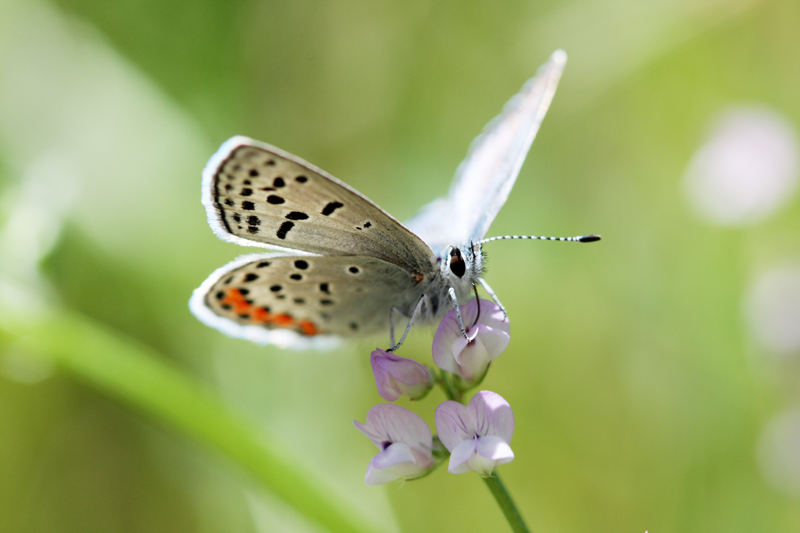
Plebejus amon
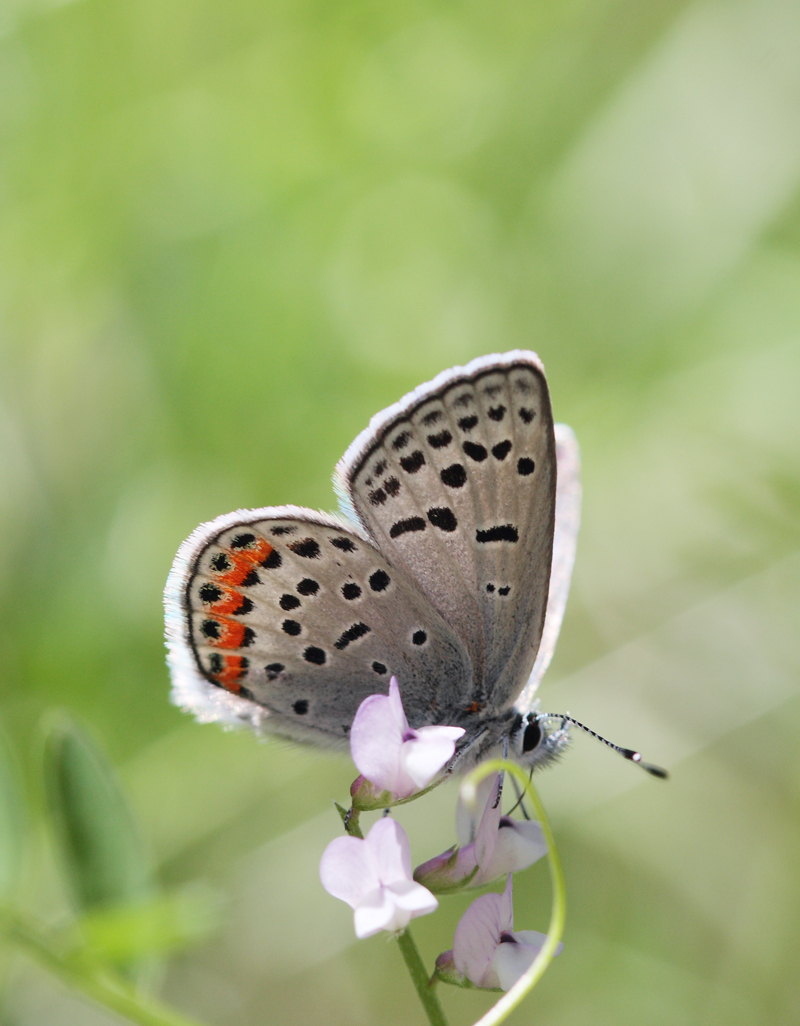
Plebejus amon

Ethmia arctostaphylella on Eriodictyon sp.
One interesting note on Ethmia arctostaphylella – the name is a misnomer, it does not actually feed on Arctostaphylos (Manzanita). At the time of description in 1880 Walsingham had found larvae pupating on leaves of manzinata and assumed it was their host plant. In Jerry Powell’s stunning monograph of the group he indicates this moth was reared from Eriodictyon – which happens to be the flower the moth is perched on. The two plants grow side by side, and it’s pretty easy to see how a wandering caterpillar finds its way onto a neighbor.
|
Ceticismo
|













